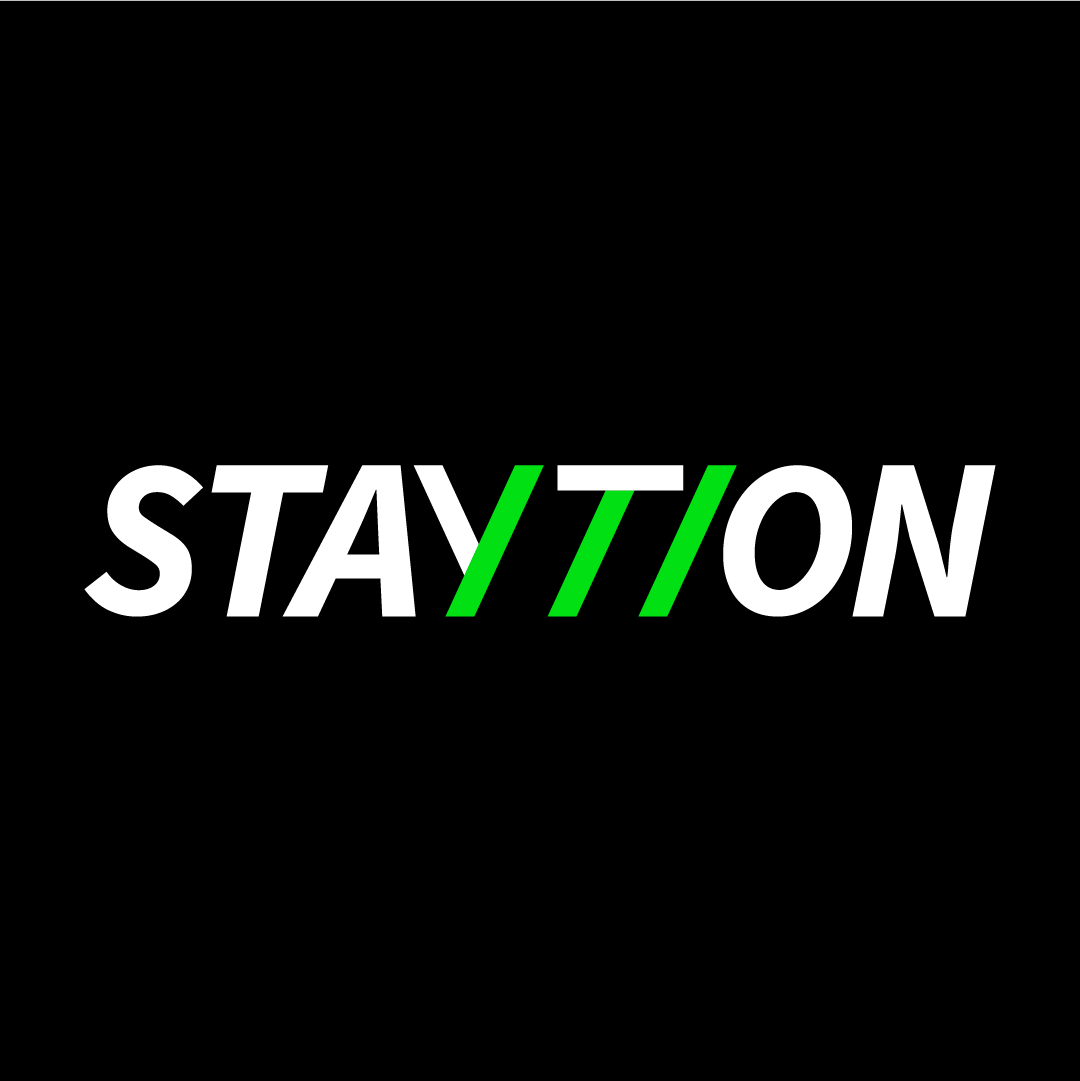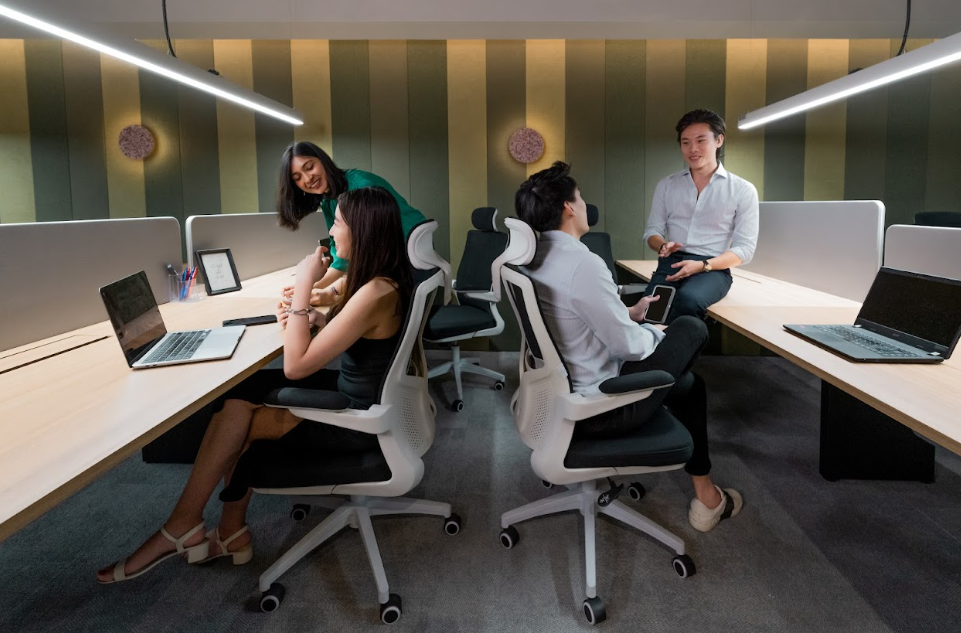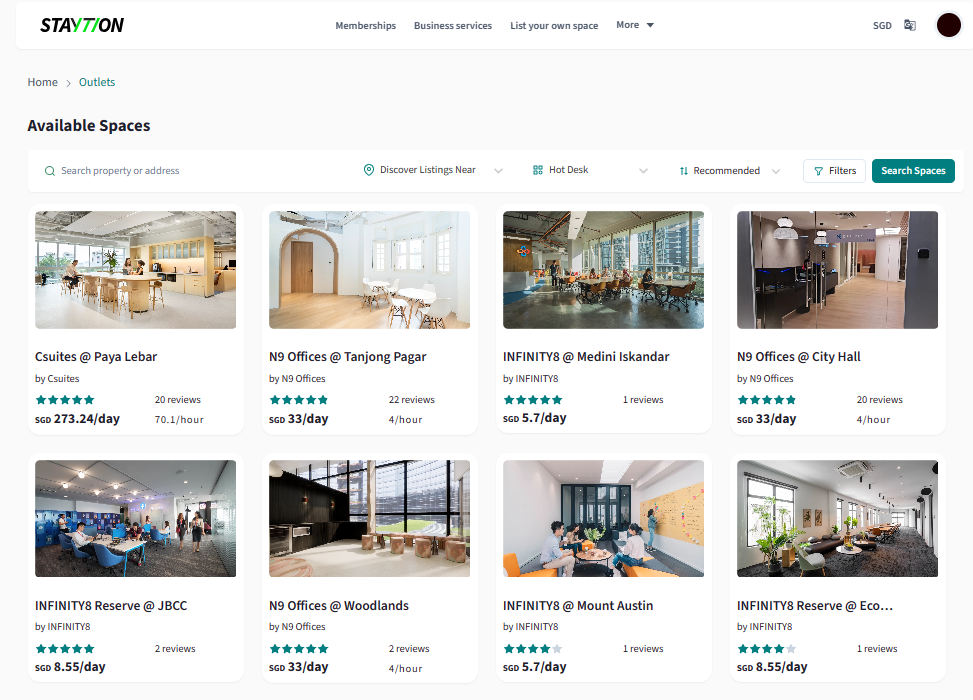How Effective is Hot Desking?
 Staytion
Staytion
Imagine stepping into work, not to the same, stationary desk every day, but to a new space, a fresh perspective each morning. This is the essence of hot desking, a flexible workspace design that has taken the modern office by storm. Hot desking is not just about maximizing office space or cutting costs; it's about unleashing creativity, boosting productivity, and fostering a vibrant, energetic work environment.
This revolutionary approach lets employees choose their seats daily, fostering collaboration, flexibility, and freedom. Let's delve into how this innovative workspace strategy boosts productivity and satisfaction, reshaping our work environments for good.
What is Hot Desking?
What exactly is a Hot Desk? For starters, Hot desking is a flexible office arrangement where multiple individuals use a single workstation or desk at different times, rather than having assigned desks. In a hot desking setup, employees can choose any available desk when they come into the office, promoting flexibility, collaboration, and efficient use of workspace. This approach is common in coworking spaces and modern office environments where employees may not have fixed workstations.
Benefits of Hot Desking
Hot desking, an innovative concept in workspace design, has been making waves for quite a while now, promising a plethora of advantages that cater to the evolving needs of today's dynamic workforce. This flexible workspace strategy not only fosters an environment of creativity and collaboration but also aligns seamlessly with the modern ethos of efficiency and adaptability.
Increased flexibility
Hot desking offers unmatched flexibility, particularly as the traditional nine-to-five routine fades. Choosing a seat daily is revolutionary, breaking the monotony of assigned seating. This empowers employees to find inspiration in their evolving workplace and adapt to daily needs. They can select spaces conducive to their tasks, whether quiet corners for focus or communal tables for collaboration.
Cost-effectiveness
From a business standpoint, hot desking revolutionizes cost savings. Unlike traditional setups where fixed desks often sit idle due to absences or meetings, hot desking optimizes space usage. This minimizes the need for expansive real estate investments, allowing businesses to operate in smaller, strategic locations without compromising comfort or productivity.
The result? Lower overhead costs and a healthier bottom line.
Drawbacks of Hot Desking
While hot desking holds promise as a modern workplace concept, it poses challenges such as miscommunication, hygiene concerns, and limited spaces for feedback. However, every challenge offers an opportunity for resolution. Below are strategies to address these issues:
Lack of Personal Space
Hot desking's transient nature strips employees of dedicated personal workspaces, impacting their sense of ownership and belonging. This absence of personalized space can lower morale and productivity.
Solutions:
Personalization Allowance: Grant employees flexibility to personalize their hot desks within workplace guidelines.
Designated Storage: Provide secure storage spaces for personal belongings when not in use.
Rotational Desking: Implement a rotational system, granting employees access to a consistent desk periodically.
Impact on Team Collaboration
Hot desking's fluidity can disrupt team dynamics, hindering consistent communication and spontaneous meetings crucial for collaboration.
Solutions:
Collaboration Zones: Designate specific areas for collaboration, equipped with tools and technology.
Team Booking: Allow teams to reserve desks or meeting rooms in advance.
Regular Team Meetings: Schedule frequent team meetings or stand-ups to foster communication.
Hygiene Concerns
Sharing workspaces raises hygiene concerns due to potential germ transmission, especially amid health crises like COVID-19.
Solutions:
Enhanced Cleaning Protocols: Implement rigorous cleaning schedules for shared spaces.
Hand Hygiene Measures: Provide hand sanitizing stations throughout the workspace.
Personal Hygiene Education: Educate employees on proper hygiene practices, emphasizing handwashing and respiratory etiquette.
Your workspace, your rules – experience the freedom of hot desking with GoStaytion!
Factors Impacting Hot Desking Effectiveness

Image courtesy: Unsplash
The concept of hot desking, where employees do not have fixed workstations but instead use any available desk, is revolutionizing workspace use. Its effectiveness, however, is not solely dependent on its implementation but also on several critical factors. Understanding these can significantly bolster the success of hot desking environments.
Workspace Design
Effective hot desking relies on workspace design. Beyond ample desks, it's about inspiring creativity and productivity. This includes ergonomic furniture for comfort, natural lighting for mood and energy, and quiet zones for focus. Balancing open collaboration areas with private spaces enhances efficiency, making hot desking a top workspace strategy.
Communication Tools
In the dynamic landscape of hot desking, the importance of robust communication tools cannot be overstated. The transient nature of seating arrangements necessitates seamless communication channels that can support instant messaging, video conferencing, and real-time document sharing. Collaboration tools like Slack, Microsoft Teams, or Zoom help to bridge gaps that physical separation might create, ensuring that the team remains cohesive and productive, irrespective of their physical workstation.
Team Dynamics
The culture and dynamics of a team greatly influence the effectiveness of hot desking. Teams that are adaptable, embrace change, and possess strong collaborative skills are more likely to thrive in a hot desking environment. Conversely, teams used to conventional office setups and fixed routines may initially struggle with the transition. Building a culture that values flexibility, openness, and mutual respect is crucial in making hot desking a success.
Strategies to Enhance Hot Desking Productivity
Adopting hot desking doesn’t automatically guarantee improved productivity. Strategic measures need to be put in place to maximize its potential benefits.
Establishing Guidelines
Clear guidelines are essential to avoid confusion and ensure a smooth operation in a hot desking setup. These should cover booking processes, desk usage rules, clean desk policies, and guidelines for using communal spaces. Establishing these rules from the get-go promotes a sense of order and fairness, making it easier for employees to adapt to and embrace the hot desking model.
Offering Technology Support
Technology acts as the backbone of hot desking, enabling flexibility and connectivity. To support this, businesses must provide comprehensive technology support. This includes access to high-speed Wi-Fi, portable devices such as laptops and tablets, and cloud-based tools for easy access to work files. Moreover, a dedicated IT support team should be readily available to assist with any technical issues. This ensures that employees can work efficiently from any location within the workspace, thereby enhancing overall productivity in a hot desking setup.
Conclusion
The concept of hot desking has revolutionized the way we view and utilize our workspaces. By promoting flexibility, collaboration, and a dynamic work environment, hot desking can significantly boost productivity and employee satisfaction. However, its effectiveness relies heavily on the organization's ability to address its potential drawbacks, such as the lack of personal space and possible impacts on team cohesion.
Hot desking transforms workplaces into dynamic, productive hubs. With planning and open communication, make your office vibrant and truly flexible. It's an ongoing journey shaped by user feedback. In a changing work landscape, hot desking innovates, challenging norms and redefining workspace expectations. Embrace change, value flexibility!
Dive into the world of hot desking withGoStaytion– where flexibility meets productivity!
Subscribe to my newsletter
Read articles from Staytion directly inside your inbox. Subscribe to the newsletter, and don't miss out.
Written by


